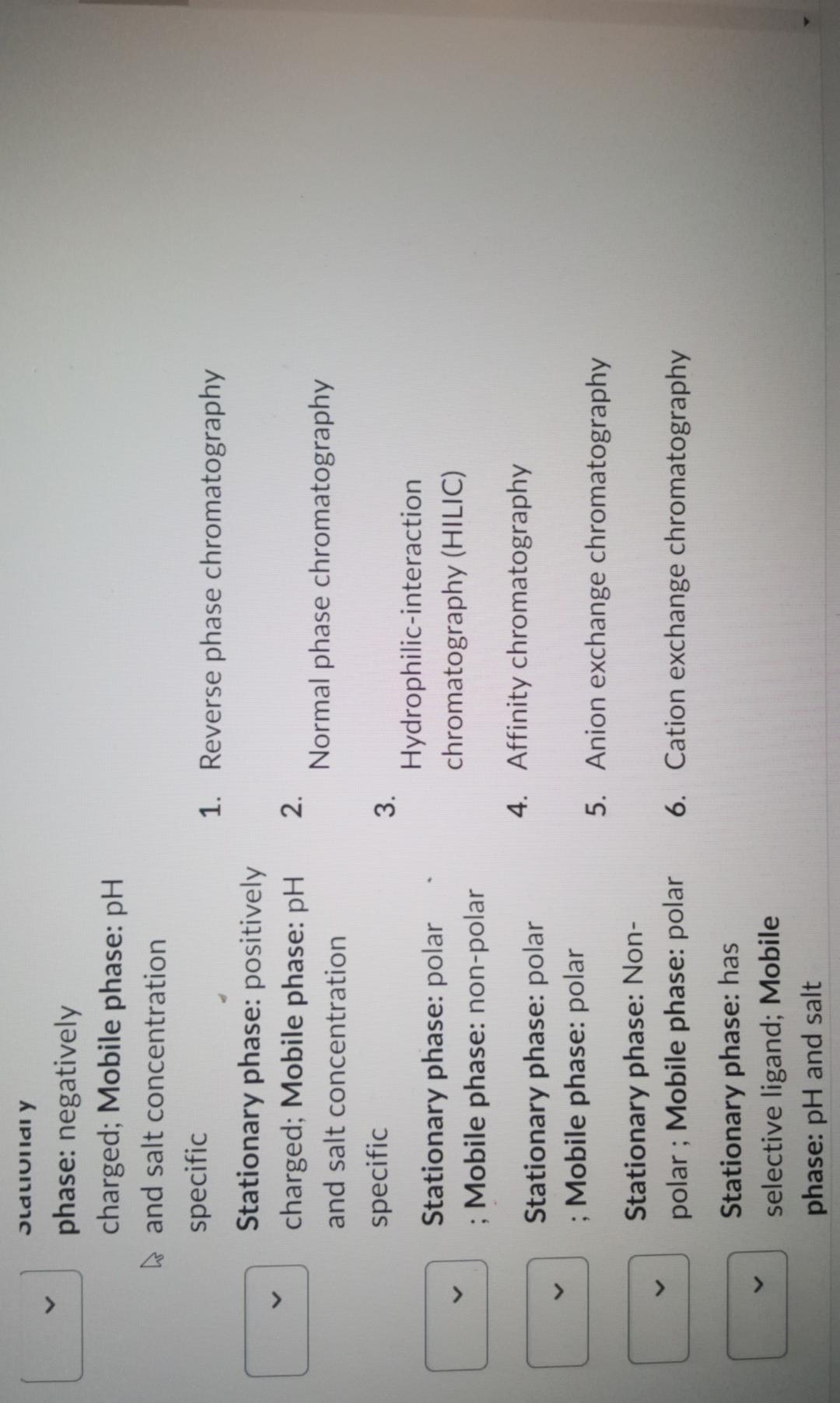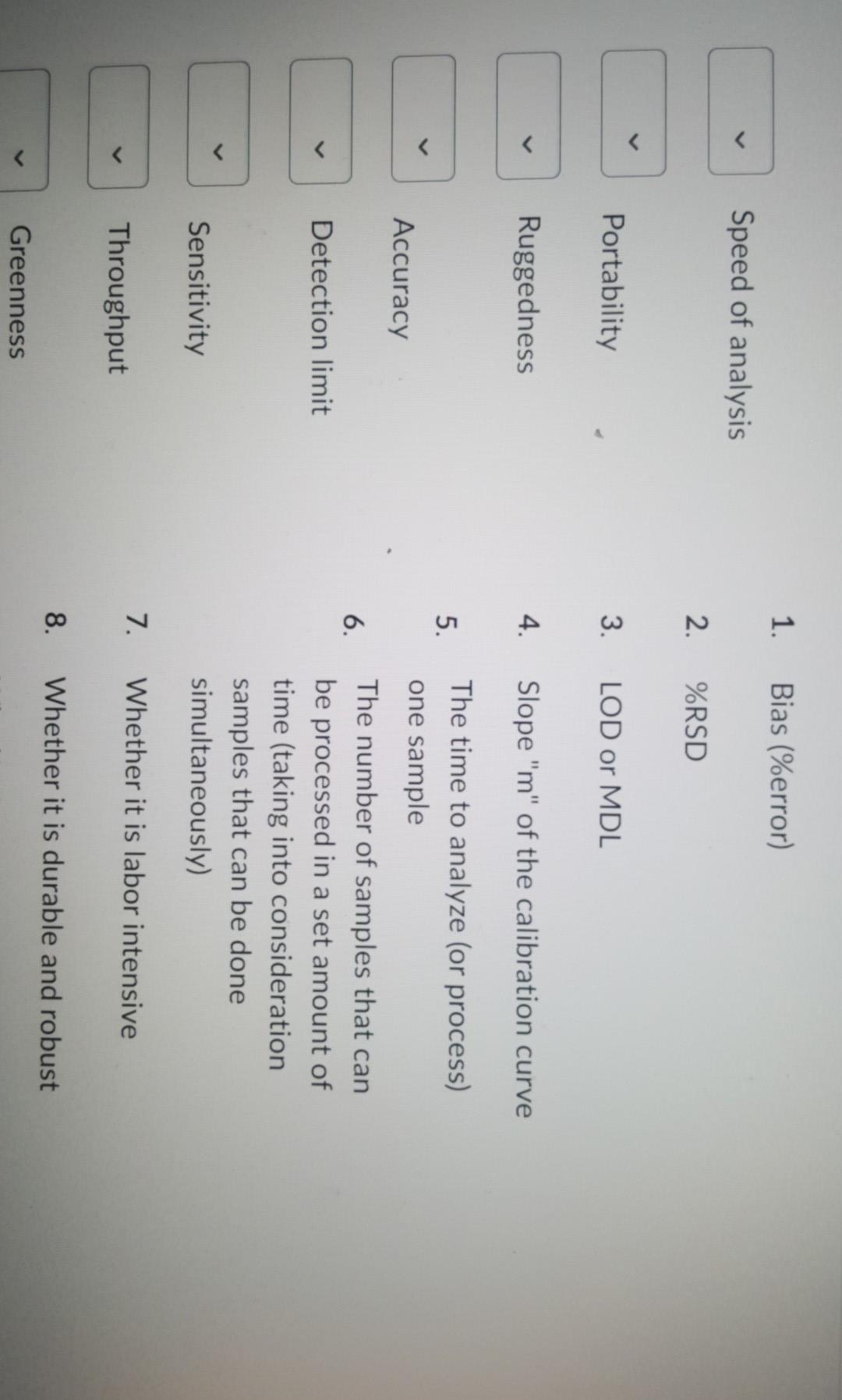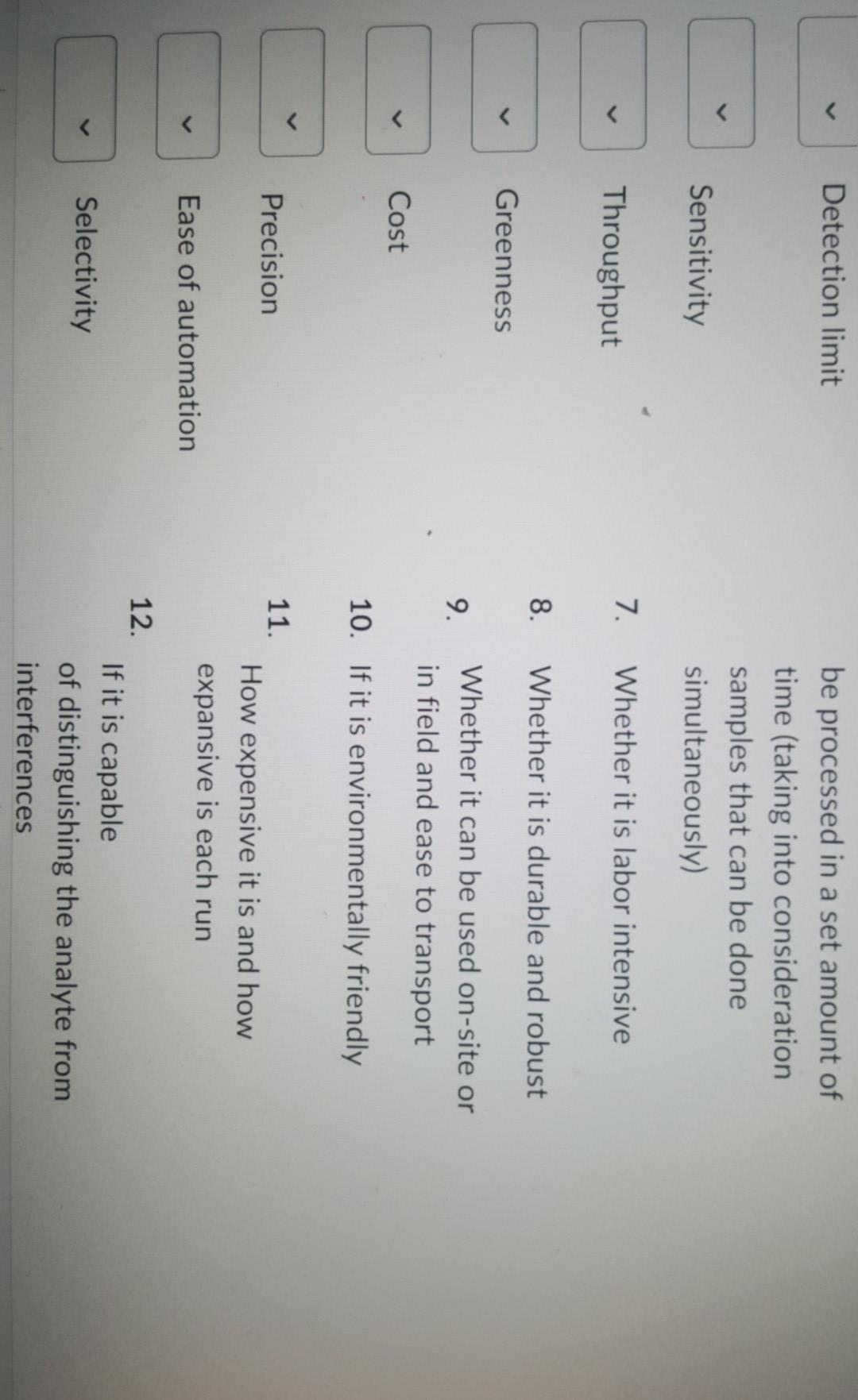Answered step by step
Verified Expert Solution
Question
1 Approved Answer
slallulidi y phase: negatively charged; Mobile phase: pH and salt concentration specific 1. Reverse phase chromatography Stationary phase: positively charged; Mobile phase: pH 2. and



slallulidi y phase: negatively charged; Mobile phase: pH and salt concentration specific 1. Reverse phase chromatography Stationary phase: positively charged; Mobile phase: pH 2. and salt concentration Normal phase chromatography specific 3. Stationary phase: polar Hydrophilic-interaction ; Mobile phase: non-polar chromatography (HILIC) Stationary phase: polar 4. Affinity chromatography ; Mobile phase: polar 5. Anion exchange chromatography Stationary phase: Non- polar ; Mobile phase: polar 6. Cation exchange chromatography Stationary phase: has selective ligand; Mobile phase: pH and salt 1. Bias (\%error) Speed of analysis 2. \%RSD Portability 3. LOD or MDL Ruggedness 4. Slope "m" of the calibration curve 5. The time to analyze (or process) Accuracy one sample Detection limit 6. The number of samples that can be processed in a set amount of time (taking into consideration samples that can be done Sensitivity simultaneously) Throughput 7. Whether it is labor intensive Greenness 8. Whether it is durable and robust Detection limit be processed in a set amount of time (taking into consideration samples that can be done Sensitivity simultaneously) Throughput 7. Whether it is labor intensive 8. Whether it is durable and robust Greenness 9. Whether it can be used on-site or Cost in field and ease to transport 10. If it is environmentally friendly Precision 11. How expensive it is and how Ease of automation expansive is each run 12. Selectivity If it is capable of distinguishing the analyte from interferences slallulidi y phase: negatively charged; Mobile phase: pH and salt concentration specific 1. Reverse phase chromatography Stationary phase: positively charged; Mobile phase: pH 2. and salt concentration Normal phase chromatography specific 3. Stationary phase: polar Hydrophilic-interaction ; Mobile phase: non-polar chromatography (HILIC) Stationary phase: polar 4. Affinity chromatography ; Mobile phase: polar 5. Anion exchange chromatography Stationary phase: Non- polar ; Mobile phase: polar 6. Cation exchange chromatography Stationary phase: has selective ligand; Mobile phase: pH and salt 1. Bias (\%error) Speed of analysis 2. \%RSD Portability 3. LOD or MDL Ruggedness 4. Slope "m" of the calibration curve 5. The time to analyze (or process) Accuracy one sample Detection limit 6. The number of samples that can be processed in a set amount of time (taking into consideration samples that can be done Sensitivity simultaneously) Throughput 7. Whether it is labor intensive Greenness 8. Whether it is durable and robust Detection limit be processed in a set amount of time (taking into consideration samples that can be done Sensitivity simultaneously) Throughput 7. Whether it is labor intensive 8. Whether it is durable and robust Greenness 9. Whether it can be used on-site or Cost in field and ease to transport 10. If it is environmentally friendly Precision 11. How expensive it is and how Ease of automation expansive is each run 12. Selectivity If it is capable of distinguishing the analyte from interferences
Step by Step Solution
There are 3 Steps involved in it
Step: 1

Get Instant Access to Expert-Tailored Solutions
See step-by-step solutions with expert insights and AI powered tools for academic success
Step: 2

Step: 3

Ace Your Homework with AI
Get the answers you need in no time with our AI-driven, step-by-step assistance
Get Started


